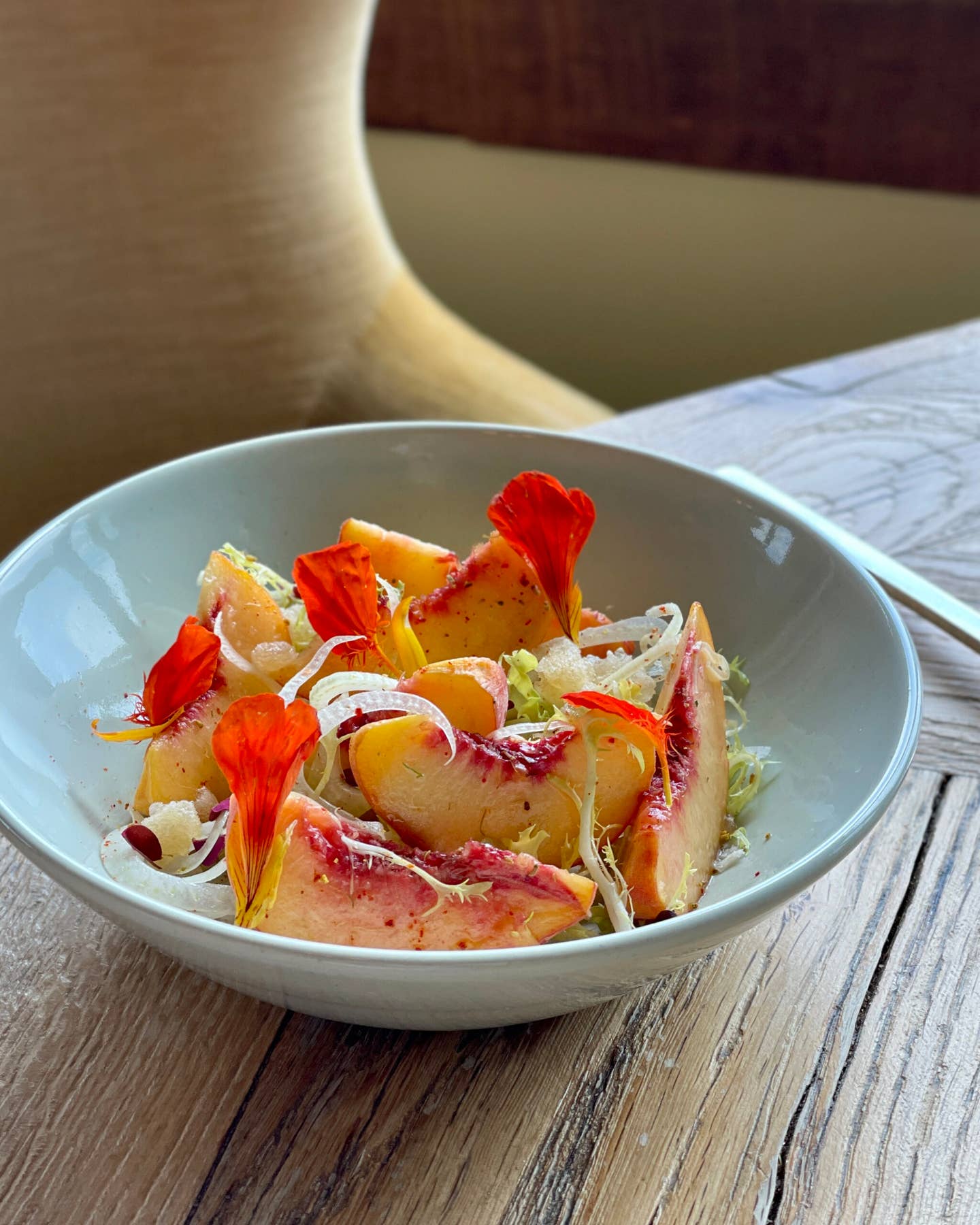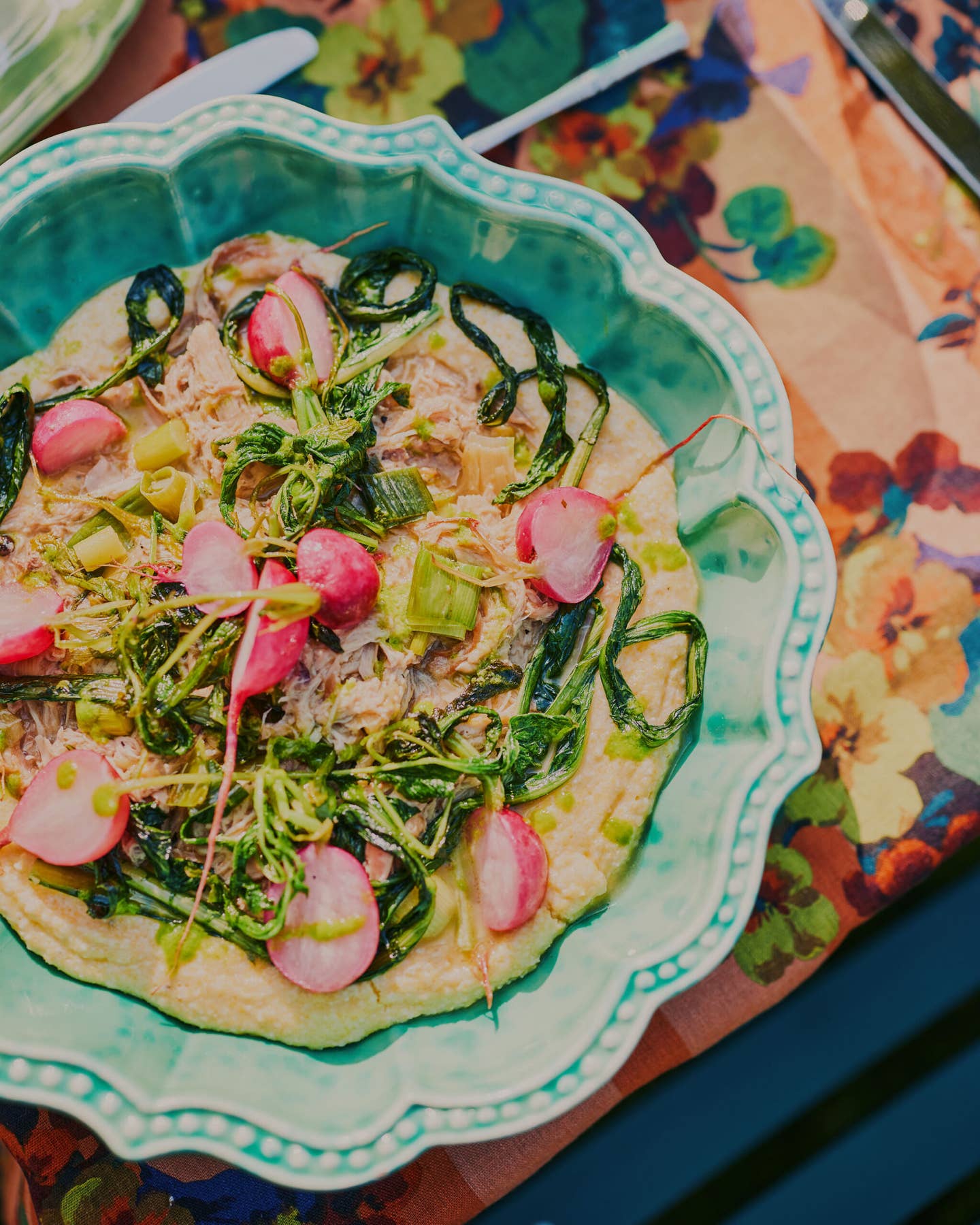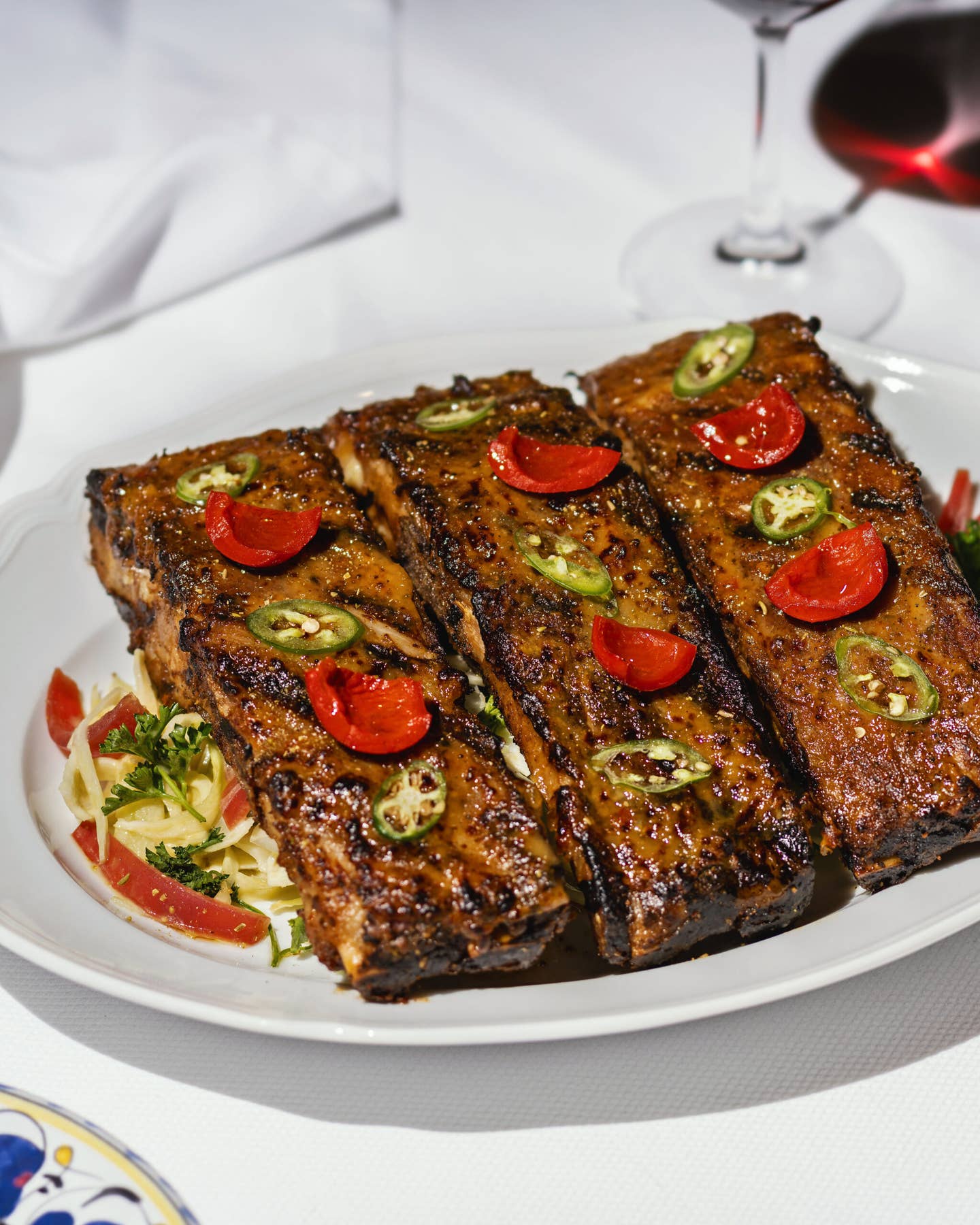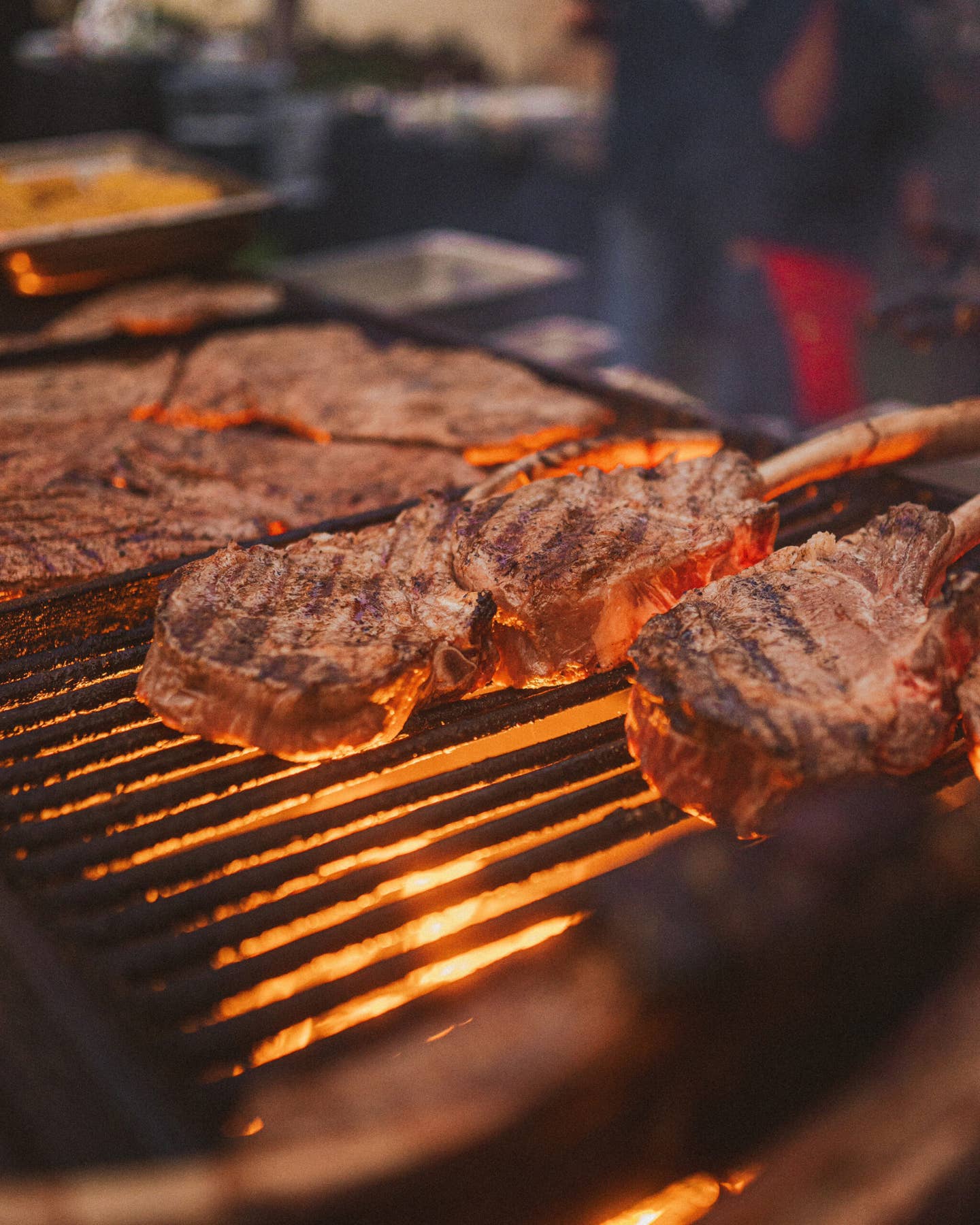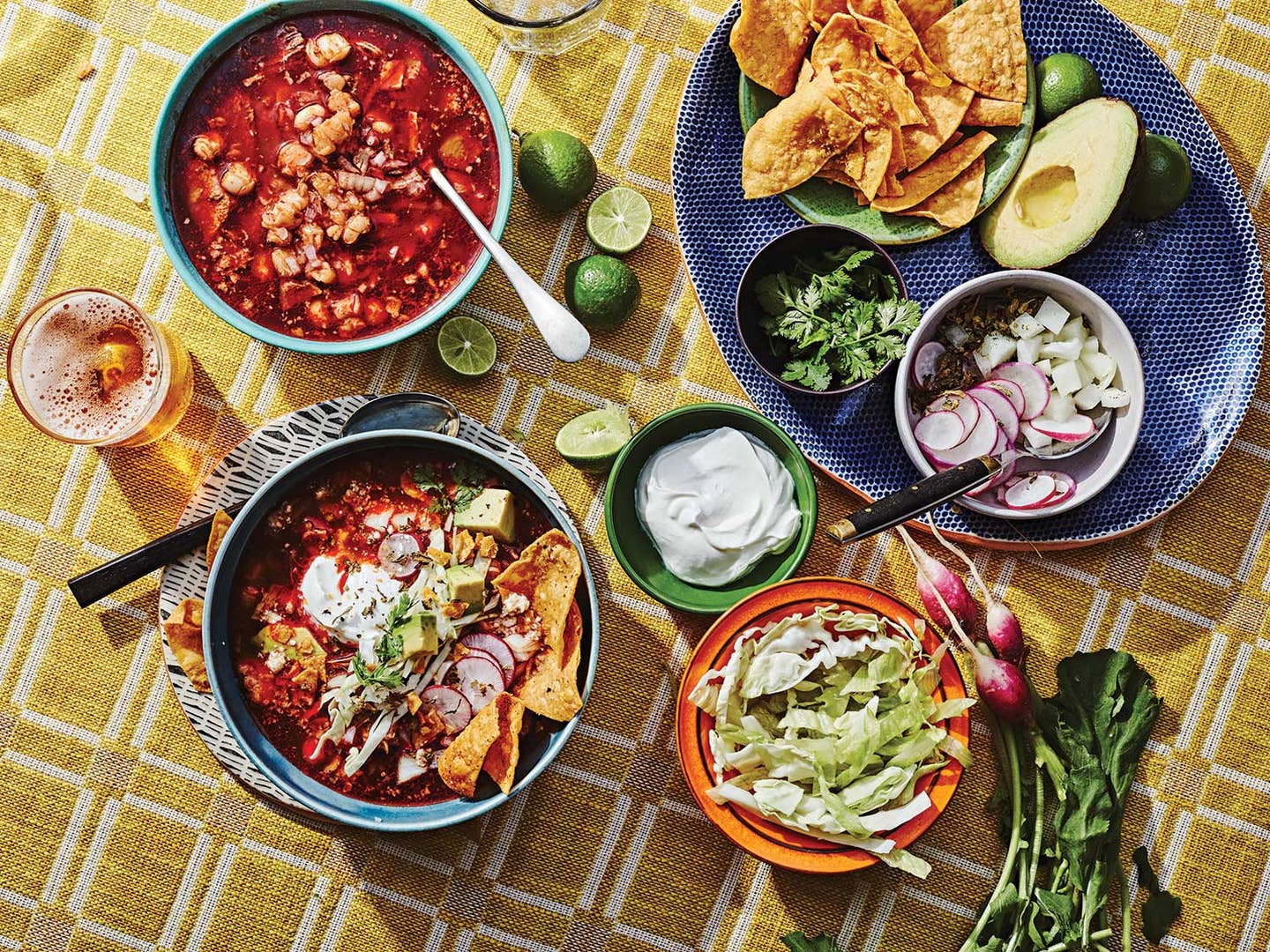
How to Make Pozole, Mexico’s Greatest Party Food
Fortified with hominy, chiles, and often myriad pig parts, pozole is a celebratory dish in Mexico and beyond
Every time Steve Sando, the founder of California-based heirloom bean company Rancho Gordo, heads down to Mexico, he encounters a new kind of pozole. "I remember one I tasted in Oaxaca where the cooks used some puréed hominy to thicken the broth and cooked it with goat meat," Sando says in a rapturous daze. "I still think about it to this day."
After more than 40 trips across the country over 35 years, the bowls have added up: In Michoacán, a broth was stained green with fresh chiles, tomatillos, and ground pumpkin seeds. In Guerrero, a pale white variation was garnished with pork cracklings. In Acapulco, an unusual rojo sassed with tomatoes was fortified with shellfish instead of the typical pork. "Whichever one I ate last is my favorite," he says with a chuckle.
An ancient stew of corn, fish or long-simmered meat, and a garden's worth of vegetable toppings, pozole is Mexican party food. It's the kind of labor-intensive but universally beloved dish to break out for holidays and special occasions. There is no known original pozole or single birthplace; it dates back to indigenous religious festivals well before the Hispanic conquest, and early Spanish texts shed little light on its history. As Mayan and other civilizations traded goods across ancient Mexico, pozole migrated along with them, even up north to native tribes in the American Southwest, where the cooks incorporated the local practice of roasting green chiles and it is now spelled "posole." Today, Mexican pozole comes in red, green, and white varieties, and every region has its preferred proteins and garnishes. But the corn is nonnegotiable.
The corn in question is nixtamal, aka hominy, the result of boiling dried corn kernels with alkaline wood ash or slaked lime (calcium hydroxide, or simply "cal") to render the grains more nutritious and digestible. The Nahautl people termed it pozolli, and the name stuck, both for the corn and the soup made with it. Run that hominy through a grinder and you have masa, the dough used for tortillas and tamales. Leave it whole and, well, pozole (the dish) is so good that it's pretty much become the only way Mexican cooks use pozole (the ingredient) in recipes.
Sando has made pozole perfection his kitchen mission. It includes tinkering with various recipes, as he’s been doing since his first bowl in Guadalajara in 1984, and even improving the nixtamal at the center of the dish. Sando is one of the few evangelists for dried hominy, a shelf-stable nixtamal that can be soaked overnight and simmered for pozole in a fraction of the time it takes to start from scratch with dried corn. The ingredient is a rarity in Mexico, where most cooks either patiently simmer their own nixtamal or, increasingly, buy it prepared in cans.
In his new cookbook, The Rancho Gordo Pozole Book, Sando shares a recipe for a classic rojo with smoky ancho and fruity guajillo chiles. Even with dried nixtamal, the dish is a bit of a production. The key, Sando says, is to break down pozole to its core elements.
Top Quality Corn
In pozolerias and traditional Mexican kitchens, nixtamalizing corn is a time-consuming daily chore. In the U.S. and more time-pressed Mexican homes, canned prepared hominy is the norm. But what the cook gains in convenience, they lose in rich corny flavor and dense, creamy texture. Canned hominy also doesn't give the broth the same heft as homemade. A third option, and Sando's favorite, is dried hominy: nixtamalized corn kernels that have been hulled and redehydrated.
Sando first learned about prepared dried hominy through Osage Nation member Raymond Red Corn, who made and sold it in Oklahoma through his company, Red Corn Native Foods. "I immediately wondered why everyone didn't make it this way," Sando says. "The dried nixtamal had so much more flavor than the canned." Sando started selling Red Corn's dried nixtamal in 2004, and in 2014, Rancho Gordo started producing its own. (Red Corn Native Foods has since stopped making and selling the ingredient for unrelated reasons.)
You can find dried hominy in some well-stocked Mexican markets, where it's often sold as mote blanco or white-corn posole, or order it online at Rancho Gordo or Los Chileros de Nuevo Mexico.
A Mix of Meats
Pork is by far the most common meat used for pozole, and the way Sando sees it, the more parts, the better. Historically, pozole was a celebratory dish made for fat times, often to coincide with an animal’s slaughter. In place of using a whole pig’s head—which Sando says will make the most gelatinous stock you’ve ever eaten—a trotter, ear, snout, or a combination of a few parts gives the broth impressive body and flavor. Ask your butcher to split a trotter lengthwise to better diffuse its collagen into your stew. You can add pork shoulder for heft and spoonable meat chunks, or use the pork shoulder and ribs alone for a leaner broth.
A Dense Broth
“Once you add all the condiments, it’s so complex, it doesn’t really need many aromatics,” Sando says about pozole’s base, which he actually makes in two installments. He cooks the hominy in a separate pot from the meat so he can control the doneness of both elements more precisely. The corn simmers with just an onion for flavoring, while the pork broth works with a mix of onion, garlic, bay leaves, and peppercorns.
The pozole rojo below relies on ancho chiles for depth and heat, and guajillos for color and brightness. Despite pozole’s many regional variations, most red versions that Sando has tasted use that same combination. Adding the chiles at the end helps preserve their flavor.
Toppings Galore
Classic pozole toppings include radishes, diced onion, limes, and Mexican oregano, but as with everything else about this dish, variations abound. Sando is partial to adding green cabbage sliced razor-thin, but his friends in Mexico City find the idea ludicrous; they use iceberg lettuce prepared similarly. In parts of Guerrero, you can get your pozole blanco topped with crispy pork rinds. Whatever your choice of toppings, endeavor to have a lot of them, and a mix of textures and flavors. This is party food, after all. It’s supposed to take over the table.
Keep Reading
Continue to Next Story





